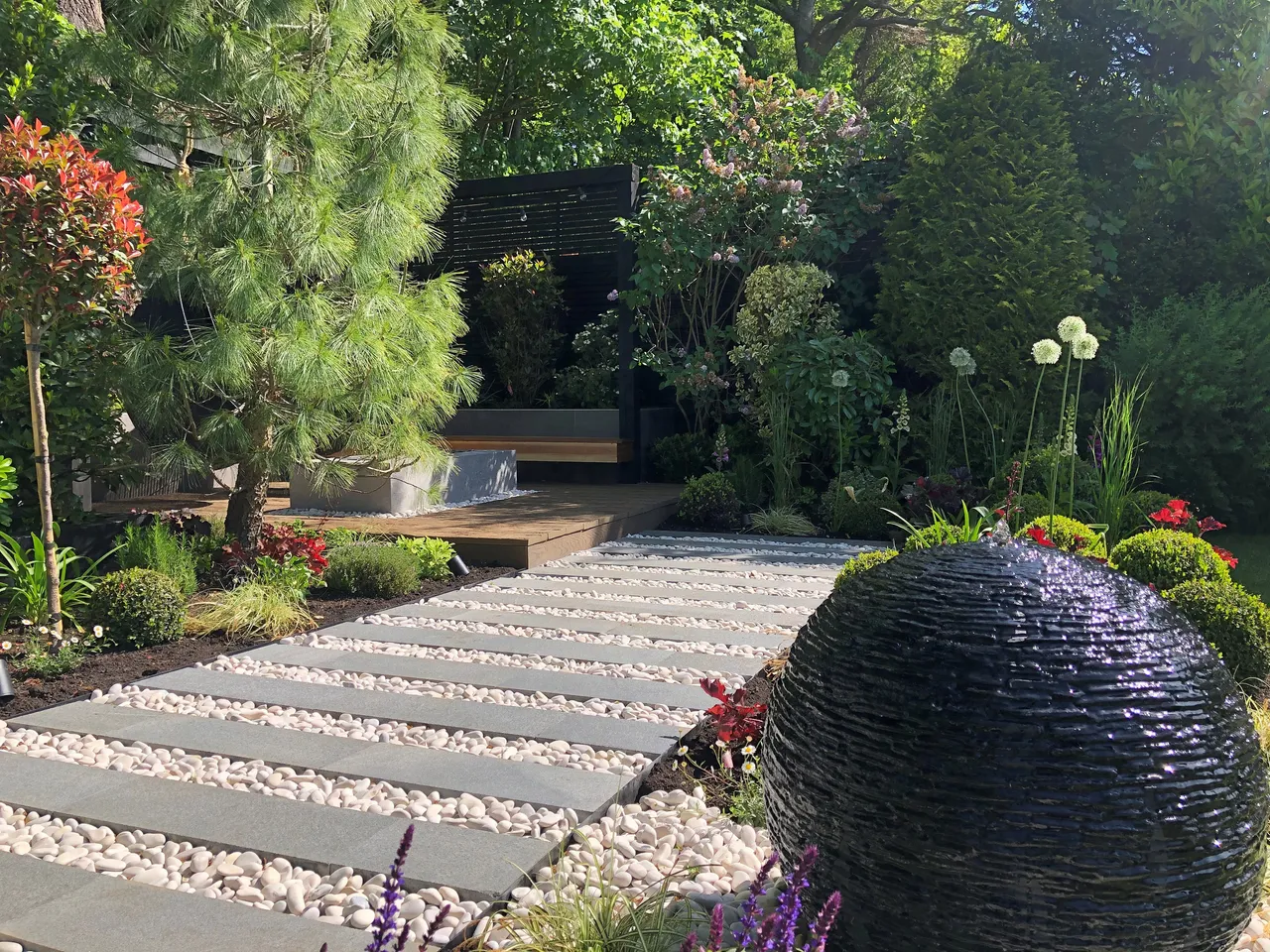Garden paths have become a key landscape feature on their own, where formerly they were often just a means getting from A to B.
A beautiful path will definitely enhance the design look of your landscape.
The choice of materials and surfaces will influence the style you’re trying to achieve. For example, large smooth pavers suit a formal modernist look, whereas smaller cobblestone type pavers, decorative pebbles, or even mulch will work much better in softer, more naturalistic settings.
Paths work best when they have a directional purpose, such as leading you to the entrance to the house, allowing access to the vegetable plot, or simply letting you take a relaxed ‘tour’ around your garden. Edging (concrete or wooden sleepers for example) can add definition and keep the path tidy.
The embedded paver
One of the most popular trends we are seeing in the creation of a decorative path is the laying of an attractive pebble on the base, then embedding pavers as the ‘steps’ often in contrast to the pebble tones.

In this path white lime chip is contrasts against the rectangular grey paver to define where to walk.

(image courtesy of www.londonstone.co.uk)
Here the pavers become ‘stripes’ along a wide strip of path using bigger size stones. The stones spill over to become the base of the water feature, but the walker is kept on the path as it is the natural walkway.

And here these macrocarpa sleepers are helping to break up the large expanse of Waikato Fleck pebbles, with the brazier as a destination.

To meet the client's coastal brief, Onestone Landscapes used rustic railway sleepers to contrast with the white lime chip and smooth grey pavers.
_______________________________
Defining with concrete
Concrete has become the darling of landscape design and is being redefined in use as pathways. A great way to create a place to walk amongst an area of different texture is to lay or pour rectangular pavers.

In this image above, pavers have been set in the family lawn to lead from the deck to the spa pool.

Using larger concrete sleepers boxed and poured on site this more casual pathway is defining the move from the hard surface courtyard into the garden, with planting softening the transition.

This path by Onestone Landscapes provides an attractive means of accessing both the house entrance at halfway and getting to the rear of the property. Edged with wooden sleepers, the concrete has had the aggregate exposed to provide a safe surface and added texture to the look.
______________________________
Go for a wander
A path with curves and bends can add a feeling of discovery as you walk along. Straight paths work well when heading directly to a doorway or the clothesline particularly when you’re trying to achieve a sense of symmetry and order. The paths invite the viewer to meander, slowing the pace and letting the focus become the garden setting.

This path from Auckland’s Local Landscapes show how simple materials like Hoggin and Gap 7 can be very effective for path creation. According to designer Matt, "The clients on this job requested a path that was solid underfoot but unlike concrete would still maintain the naturalistic feel of the garden."

Here wooden sleepers, embedded in small Waikato Fleck pebbles, accentuate the curve of this path. Because it isn’t intended to be a major thoroughfare, just a means to seating area, the owner has kept it relaxed by letting some plants spill over it a little.


The ‘inkspiration’ for this geometric design from Ministry of Ground came from garden designer Dan Mackay’s own limbs! Following the ‘argyle pattern’ seaming his own leg, he repeated it in a blend of black, grey and natural pavers on this garden path. The eye is now drawn to the pattern rather than focusing on the fact that this is a service area for the house.
Cover photo courtesy of Neil Hepworth/RHS
